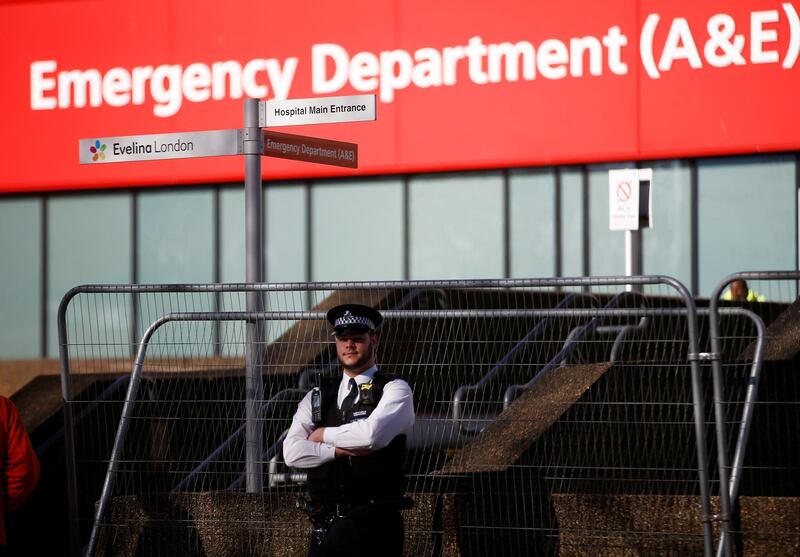The admission of UK premier Boris Johnson to an intensive care unit is a sign of a grave development in his health after early figures showed that half of Covid-19 patients died in critical care units.
Mr Johnson, 55, is in the intensive care unit at the St Thomas’ hospital, a renowned medical centre in south London, but has not been on a ventilator which is needed for the most gravely-ill patients, according to Cabinet colleagues.
Few details have been released of his condition after he was taken to the hospital on Sunday with “persistent symptoms of coronavirus”.
His condition worsened on Monday and was moved to the intensive care unit at about 7pm on Monday as a precaution should he need ventilation to aid his recovery.
Nearly two-thirds of patients are put on ventilators within 24 hours of moving into an intensive care unit, said the Intensive Care National Audit and Research Centre (ICNARC).
Successful treatment in intensive care requires available ventilators and other breathing devices, oxygen and highly-trained staff who remain symptom-free to carry on their work.
The NHS is seeking about 18,000 ventilators to deal with the crisis, with about half that number in service.
“The prime minister is not on a ventilator,” Michael Gove, a member of Mr Johnson’s Cabinet, told the BBC on Tuesday. “He has received oxygen support.”
Asked if he know whether doctors had diagnosed Johnson with pneumonia – inflammation of the lungs - he said: “I'm not aware of that”.
The early first figures from the ICNARC study showed that 346 of the first 690 people with coronavirus had died and half had recovered. Those who died spent an average of five days in a critical care unit.
But the time lag for recovery skews the figures with the majority of 2,621 admitted to hospitals in England, Wales and Northern Ireland still requiring treatment. The figures compiled up to April 3 were an early snapshot of cases and the figures had to be treated with caution, it said.
Patients are normally moved to intensive care because of problems of breathing and difficulties of getting enough oxygen into the blood. The units are more intensively staffed and can provide one-on-one care if needed, with any changes in a patient’s condition more swiftly spotted.
"At his stage moving on to intensive care units is about keeping them under continuous monitoring and any other help they need in terms of oxygen and a little bit of help to make breathing easier," Alison Pittard, dean of the Faculty of Intensive Care Medicine told The Times.
Oxygen therapy can be administered via ventilators or continuous positive airway pressure machines (CPAP), a step up from oxygen administered via face-masks. Unlike ventilators, the CPAP machines do not require the patient to be sedated.
They use pressure to send oxygenated air into the mouth at a steady rate. If the patient continues to struggle to breathe, they can be put on a mechanical ventilator that does all the breathing.
A breathing tube is guided down the windpipe, an uncomfortable procedure which requires the continued sedation of the patient. Doctors have found that turning a patient on to their front can improve the ability of getting oxygen into the patient’s body.
Health officials warned last week about the risk to oxygen supplies because of the increased demand. One hospital north of London was forced to tell patients to stay away on Saturday because of technical issues with its oxygen equipment.
St Thomas’, which is less than a mile from Boris Johnson’s official residence, has also one of the few life support machines in the country which can be used for extremely serious cases, extracorporeal membrane oxygen (ECMO) which also replaces some of the functions of the heart and lungs.
A feature of Covid-19 is that many more men become seriously ill than women, particularly in the over 40 age group. The World Health Organisation said one in 20 patients with Covid-19 were likely to need intensive care treatment.








